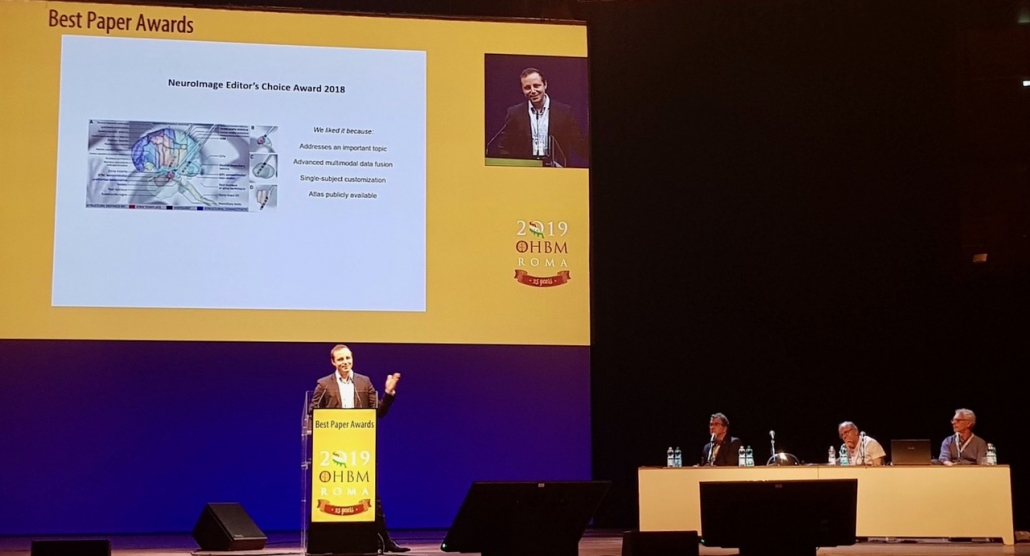

Architectonics of the parietal and temporal association cortex in the strepsirhine primate Galago compared to the anthropoid primate Macaca. Vergleichende Lokalisationslehre der Grosshirnrinde in ihren Prinzipien dargestellt auf Grund des Zellenbaues (Johann Ambrosius Barth, 1909). Architectonic mapping of the human brain beyond Brodmann. Distributed hierarchical processing in the primate cerebral cortex. Topographic organization of the cerebral cortex and brain cartography.

Anatomical and functional parcellation of the human lateral premotor cortex. in Higher-Order Motor Disorders: From Neuroanatomy and Neurobiology to Clinical Neurology (eds Freund, H.-J., Jeannerod, M., Hallett, M. Functional organization of the hippocampal longitudinal axis.
.png)
Cytoarchitectonic mapping of the human amygdala, hippocampal region and entorhinal cortex: intersubject variability and probability maps. References 3–5 demonstrate that fine-scale inter-individual differences in brain anatomy and parcellations are predictive of individuals’ behaviour, such as cognitive performance and personality traits.Īmunts, K. Spatial topography of individual-specific cortical networks predicts human cognition, personality and emotion. How interindividual differences in brain anatomy shape reading accuracy. The relationship between spatial configuration and functional connectivity of brain regions. Distributed processing distributed functions? NeuroImage 61, 407–426 (2012).īijsterbosch, J. A measure for brain complexity: relating functional segregation and integration in the nervous system. Proust and the Squid.Tononi, G., Sporns, O. International Dyslexia Association Conference (2013-2014) Dr. Each individual student with dyslexia may need different types of intervention intensity to develop the necessary highways or bridges that connect the areas of brain that most individuals use to process written language. The connections can be developed through direct, systematic instruction. Dyslexics typically compensate using areas of the right side of the brain (Healy, 2010). The other two regions are initially not connected to the Anterior region. Researchers (Pugh, 2000 Eden, 2004 Hoeft, 2014) have learned through MRI imaging that individuals with developmental dyslexia initially only use the Anterior region of the brain or only one of the three regions necessary to effectively process written passages. Individuals who have developmental dyslexia are not naturally wired to process written forms into speech and meaning.
#HUMAN BRAIN MAPPING CONFERENCE 2018 HOW TO#
Some individuals do not have the natural wiring to learn how to read. This area stores words, their pronunciations, and their meaning. The third region that is necessary for fluid reading and meaning is the occipitotemporal or storage of familiar word forms (Pugh et al., 2000). This area of the brain is known for processing orthography or visual representation into phonology or patterns of speech and semantic or meaning. The second region of the brain is the temporoparietal or Wernicke’s gyri (Pugh et al., 2000). This region is responsible for processing articulatory recoding or phonological processing (Pugh et al., 2000 Moats, 2014). The first region is the anterior-interior front gyrus or Broca’s area of the brain (Pugh et al., 2000). These regions are located in the left hemisphere of the brain. The natural wiring includes three different regions of the brain that individuals use to process written words in meaning (Pugh et al. Most individuals are genetically wired to develop the basic or initial letter and word processing networks to analyze and convert written words into usable meaning. The natural foundation or wiring for reading is dependent on your genetics and its growth is dependent on your environment. The brain also begins attaching visual or picture forms to sounds and meaning. The process of learning how to read begins at birth when babies begin attaching sounds to meaning. The process of reading is very complex, using several highways and side-roads to effectively analyze written forms into usable information. Reading is not a natural activity it is a learned process (Wolf, 2007).


 0 kommentar(er)
0 kommentar(er)
